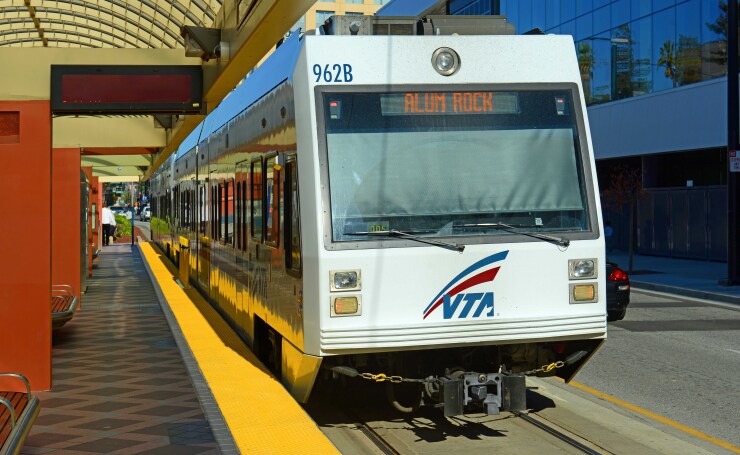Santa Clara Valley Transportation Authority staff came under fire from their own auditor general for misleading communications and a “breach of transparency” regarding cost overruns and delays on the $12.2 billion San Jose extension of the Bay Area Rapid Transit District.
The project would extend BART, a commuter railway, through downtown San Jose into Santa Clara and complete a ring of rapid rail service around the San Francisco Bay area. Santa Clara residents have approved three sales tax increases since 2000 to fund the project.
The
AdobeStock
Costs have soared on the project from initial estimates of $4.7 billion in 2014 to $12.2 billion and the completion date has been pushed out from 2026 to 2034 in the decade since its inception.
“During the course of our work on this initial monitoring report, the AG team documented what some consider to be ‘a breach in transparency’ to the board and the public, and in some instances communications that were misleading and/or dismissive of concerns that were raised related to the project,” Johnson wrote.
The report, dated Jan. 11, was included in a board packet posted on the website ahead of its meeting slated for Wednesday.
When VTA announced the price tag had jumped from $9.3 billion to $12.2 billion in October, general manager and chief executive Carolyn Gonot attributed it to inflationary increases affecting all major U.S. infrastructure projects, adding VTA’s strong fiscal position and other funding sources provide a funding plan that can “absorb the increase.”
The challenges have not affected the authority’s bond ratings.
Moody’s Investors Service
S&P upgraded the authority’s rating on June 28 to AAA from AA-plus on the Measure A sales tax revenue bonds. Credit analyst Scott Shad said in a statement then that the upgrade reflected “VTA’s improved coverage and liquidity following formal adoption of an additional bonds test of 2.0x, up from 1.3x, and continued resilience of the Measure A sales tax supported by a robust local economy.”
It has a stable outlook from all three agencies.
SCVTA, commonly known as the Valley Transportation Authority, is a special district responsible for public transit services, congestion management, specific highway improvement projects and countywide transportation planning for Santa Clara County, the most populous county in the San Francisco Bay area.
The project includes five miles of subway tunnels, 48 heavy rail vehicles, two mid-tunnel ventilation and egress facilities and a storage yard and maintenance facility. The project is being designed and constructed by VTA, will be owned by VTA, and operated and maintained by BART.
The report notes the project budget numbers had not been updated since August 2022, leaving a void in evaluating the budget balance, and that concerns raised by the project management oversight contractor were not widely reported. On the positive side, the current funding strategy will maximize the federal grant funding while preserving local revenue sources.
VTA had formed an ad hoc committee to track the project in October after concerns were raised about cost overruns.
The AG recommended the general manager make sure the project management oversight contractor’s monthly reports are provided to the ad hoc committee as they become available and that an executive summary be posted on the project’s website.
“It is essential that those in a leadership capacity in the organization take responsibility and accountability in developing and implementing a communication system to collect, generate, and disseminate project information that can appropriately be shared with all appropriate interested parties, which is factual, timely and relevant,” Johnson wrote.
